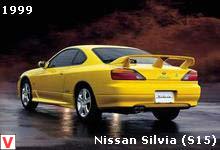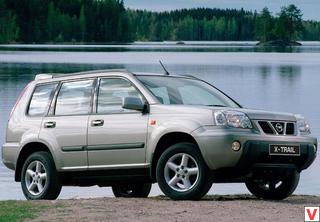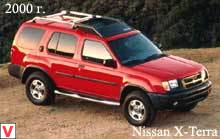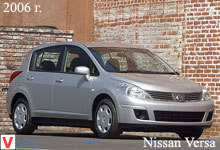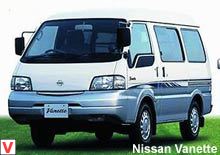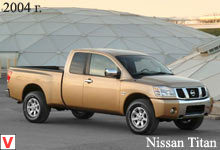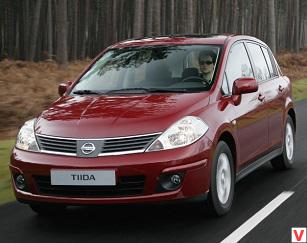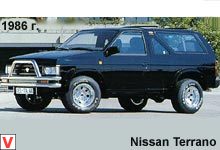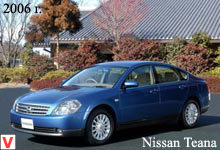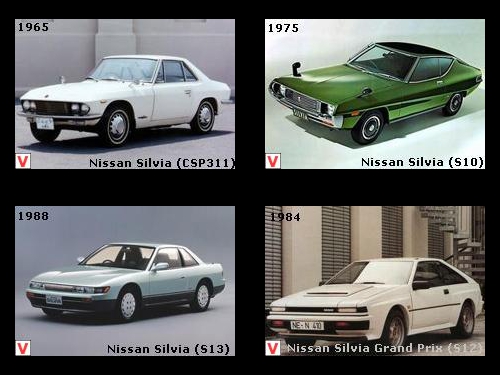
The history of the model 200SX begins in 1964, when the production of the two-seater Silvia CSP311 began in Japan. Its production continued until 1968. In 1970, production was resumed, the car’s layout became “2 plus 2”; it was equipped with a 2-liter gasoline engine and was designed to compete with the Toyota Celica. In some markets, Silvia was marketed under the name Datsun 200SX. In 1975, the production of the Silvia S10 began. The model was placed on a type C platform. The exterior of the car was quite traditional and not as defiant as the competitors from Toyota and Mazda.
On the S10 installed engines L18B and L20B, respectively, a volume of 1.8 liters (for Japan) and 2 liters (for the North American market). In the US, the car was sold under the brand Datsun 200SX, in Europe - Silvia. The release of this version due to low demand was completed in 1979. The next generation S110 Silvia / Datsun 200SX was produced from 1979 to 1983.

This version had two types of body: 2-door coupe and 3-door hatchback. Initially, it was completed with a rotary engine of its own design, designed and built on the Nissan, and the chassis is similar to the model Mazda Cosmo. As a result, the design turned out to be rather unreliable, and Nissan was forced to start installing conventional piston injection engines of the new Z-series: Z20 and Z18ET (with turbocharging).
The fourth generation S12 / 200SX hit the market in 1984. The range of engines installed on this model included gasoline engines of 1.8 liters, 2 liters and 3 liters, which were aggregated with a 5-speed manual or 4-speed automatic gearbox. To participate in the World Rally Championship from 1983 to 1985, a Silvia 240RS coupe equipped with a 2.4-liter DOCH FJ24 engine was assembled on Nissan. On this car, Nissan riders took 2nd place in a rally in New Zealand in 1983.
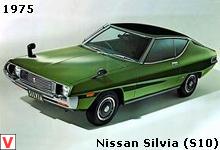
In 1988, the S12 model was discontinued. From 1988 to 1993, the S13 Silvia 2-door coupe was produced, equipped with 1.8 and 2-liter DOHC-I4 engines both with and without turbocharging, the most powerful of them being the 2-liter SR20DET with 205 hp. S13 had a 5-speed manual transmission or 4AKPP and multi-link rear suspension. Dimensions of the car 4470/1690/1290 mm with a base of 2475 mm.
Curb weight from 1110 to 1210 kg, depending on the type of transmission. This model was popular in Japan, from it all export vehicles began to carry the name 200SX. Silvia S14 debuted in Japan at the end of 1993. The model has become lower, wider and slightly shorter than the S13. A new exterior with rounded lines contributed to the illusion of a larger increase in size than it was in reality. Like the previous version, the S14 was in demand in the domestic market, which is not the case with export versions.
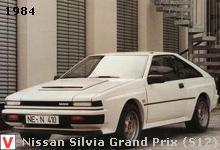
In 1996, the company held a facelift model. The end of the release of S14 occurred in 1999. In 1999, the first cars of the seventh (and last) generation Nissan Silvia S15 came off the assembly line. The model had a 2-door 4-seater coupe with dimensions of 4445/1695/1285 mm with a base of 2525 mm.
Car weight was about 1270 kg. S15 features aggressive style both externally and internally. For an extra charge were offered leather seats, Recaro seats and more. Two versions of this model were produced: S and R (turbo), both of them offered the Aero variant with a large rear spoiler having an adjustable angle of attack. The turbo version was distinguished by a 6-speed manual gearbox, a stiffer suspension with a limited-slip differential, enhanced brakes and a boost pressure indicator in a separate housing on the front pillar.
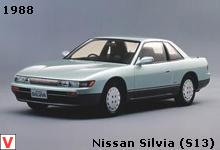
On the Silvia S15 installed inline 4-cylinder 2-liter engines with advanced control system: SR20DE with timing system DOHC-I4 165 hp (in the configuration with automatic transmission - 160 hp) and SR20DET (DOHC Turbo-I4), developing power up to 250 hp (with automatic transmission - 225 hp). Torque respectively 192 Nm and 275 Nm. The maximum speed ranged from 190 to 225 km / h.
The model could also be equipped with an electronic variable valve timing system VCS to increase engine power. The engines of this in the basic configuration of the rear-wheel drive car aggregated with 5MKPP or new 6MKPP, as well as a 4-speed automatic gearbox. The chassis and independent spring suspension of all wheels were upgraded, they are widely used components of light alloys. Brakes and front and rear disc mounted; Active safety equipment included ABS and traction control.
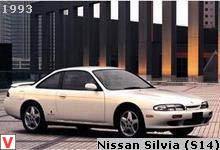
Other images auto Nissan Silvia
